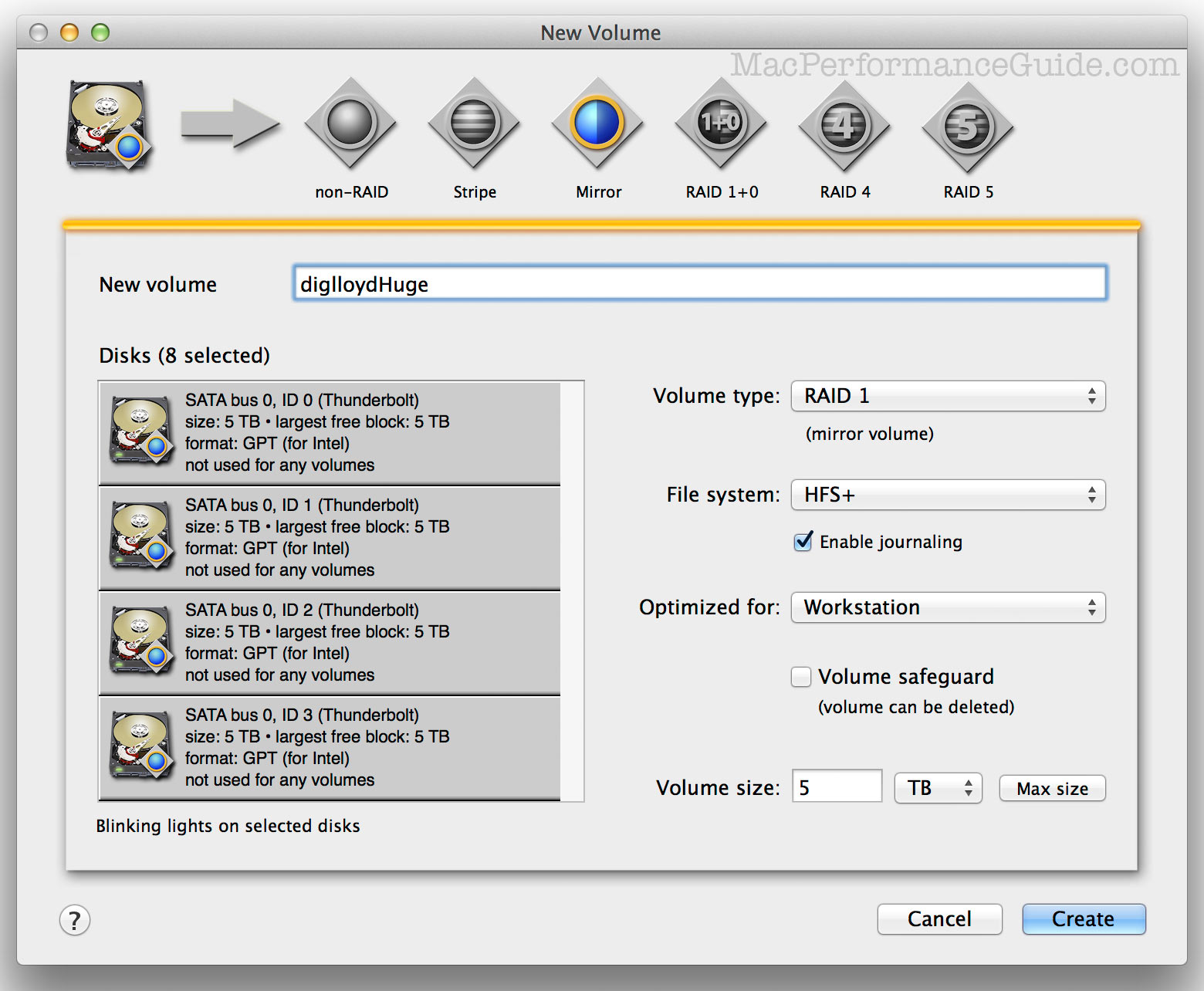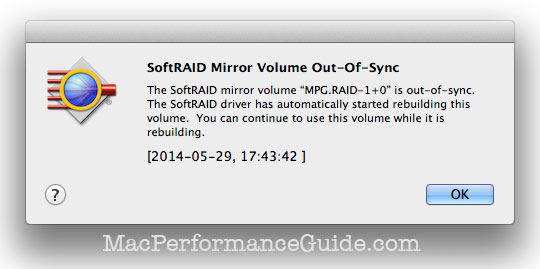
|

|

|

$610 SAVE $110 = 15.0% ZEISS 32mm f/1.8 Touit Lens for FUJIFILM X OUT OF STOCK in Lenses: Mirrorless
|

|
Why Use RAID-1 Mirror?
Related: RAID, RAID-1, RAID-5, SoftRAID, storage, Thunderbolt, video, weather events
A RAID-1 mirror set is a fault-tolerant flavor of RAID that can be understand as identical copies. The user sees one volume and icon, but there are two or more drives, each an identical copy
Typically a RAID-1 mirror uses dual drives, but a mirror can be made of 2/3/4/5/.. drives. RAID-1 offers fault tolerance by using two or more drives as exact copies:
- Little or no difference in performance over a single drive for writes, possible modest gains for reads.
- Capacity remains that of a single drive.
- Tolerates the failure of all but one drives in each mirror set. A dual-drive mirror can tolerate one drive failure, a 3-drive mirror can tolerate a 2-drive failure, etc.
- Software RAID-1 increases use of bandwidth for writes (double usage for a 2-drive mirror, triple usage for 3-drive mirror, etc).
Users looking for maximum fault tolerance can create a 3-drive or even 4-drive or more RAID-1 mirror. There is no performance gain to be had, except a modest one for readds.
Shown below to emphasize the point is an 8-drive RAID-1 mirror, which would allow an incredible 7 drive failures! That’s 8 X 5TB as shown, with capacity of 5TB, since there are 8 identical copies on 8 drives.

Whereas Disk Utility simply kills an out of sync mirror drive, SoftRAID has a smart rebuild feature which can even be used for a backup-type purpose (pull a drive, then restore later):


 diglloydTools™
diglloydTools™

